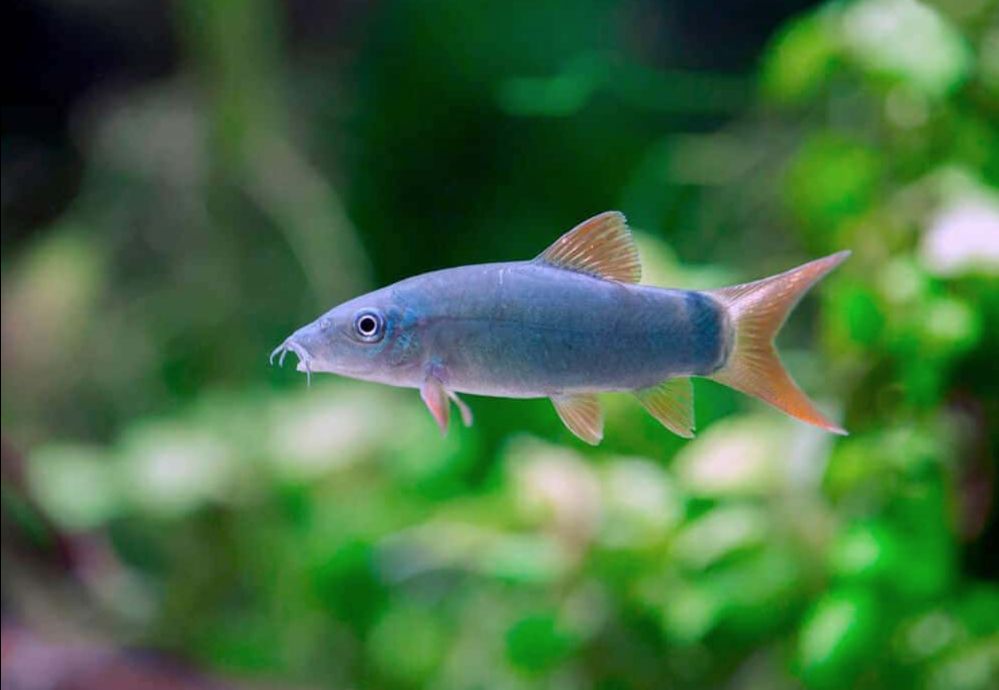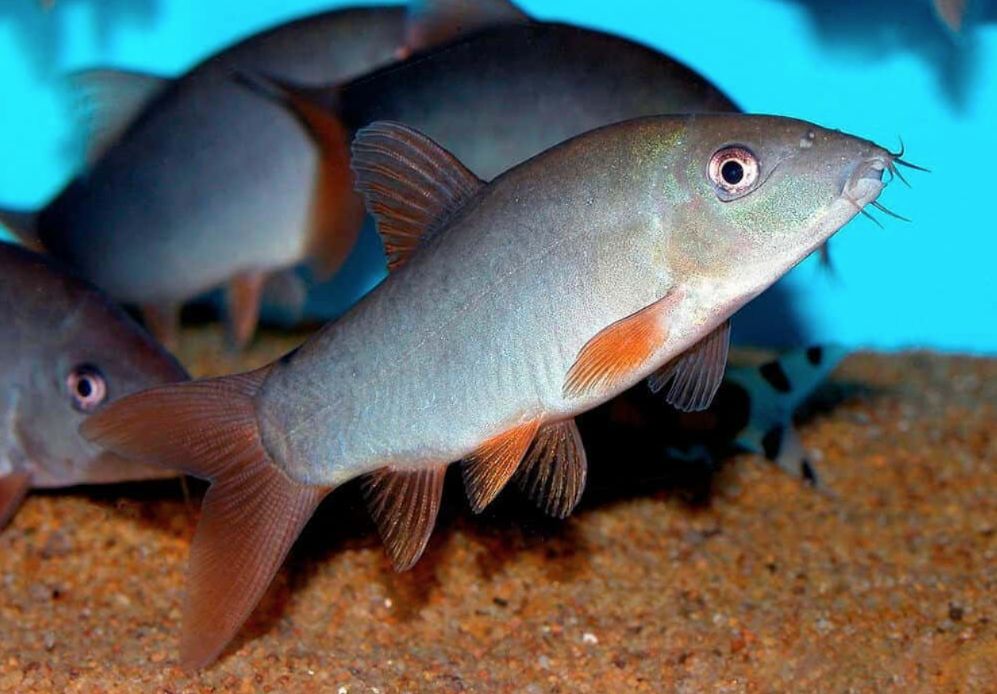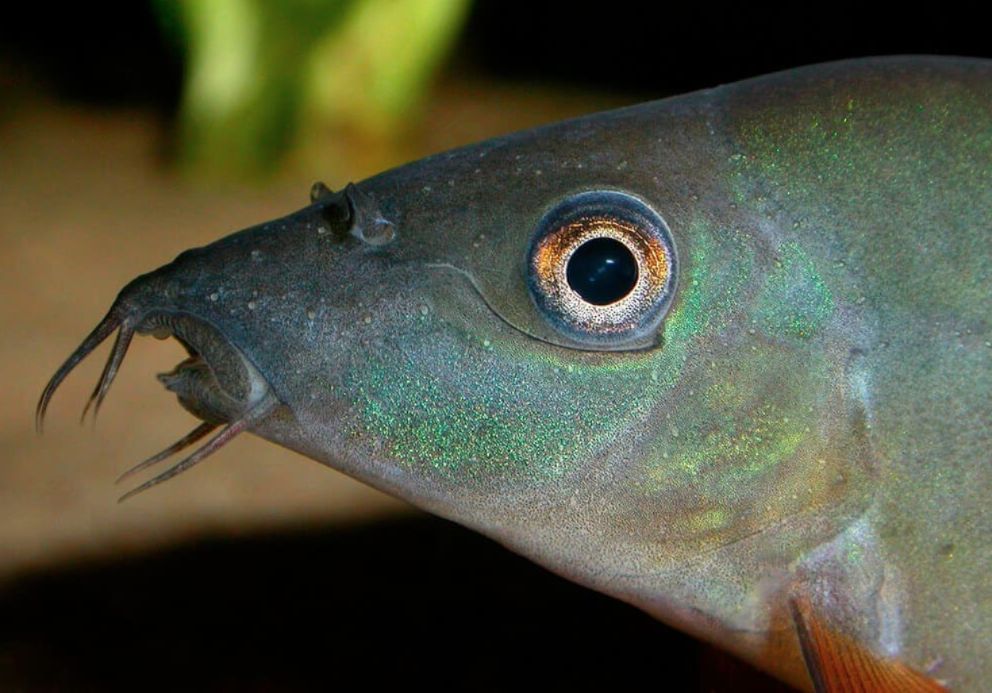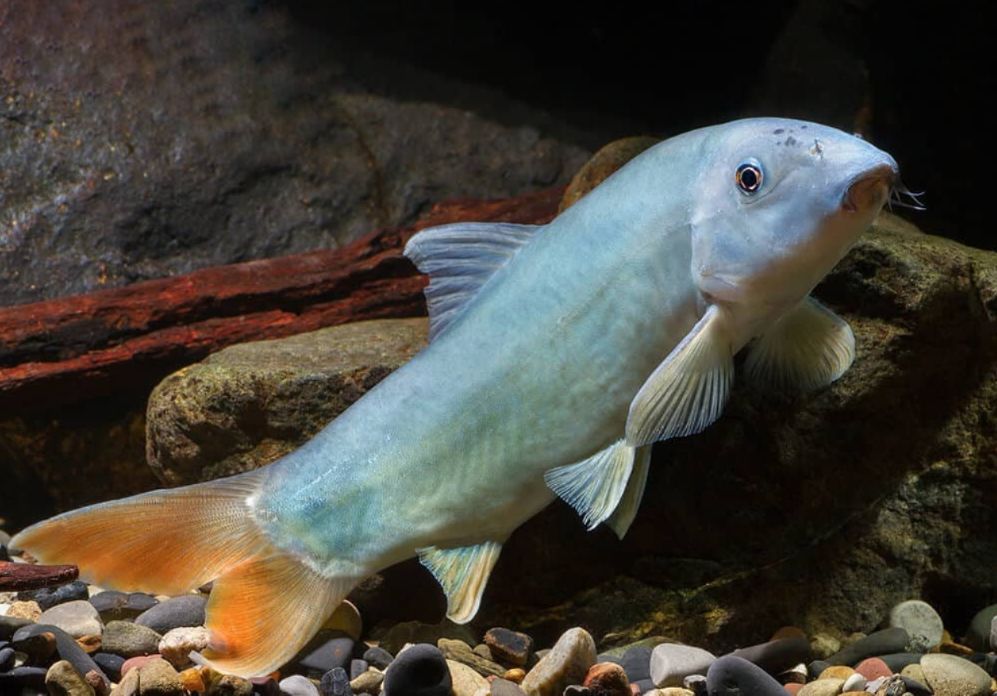Yasuhikotakia modesta, commonly known as the blue botia or redtail botia, is a striking freshwater fish from the family Botiidae. While not as commonly found in home aquariums as some other species, it remains a favorite among enthusiasts for its vivid coloration and lively behavior. With its bright blue body and contrasting red tail, the blue botia adds a bold splash of color to any tank.
Like other botia species, the blue botia thrives in similar tank conditions, making it a suitable choice for those already familiar with botia care. Its unique personality and captivating appearance make it an engaging addition to any freshwater setup.

Contents
Habitat in the wild
The blue botia belongs to the family Botiidae. The blue botia is widely distributed across Southeast Asia, particularly in Thailand, Laos, and Cambodia. Its range spans the Mekong River basin and extends to the Chao Phraya, Bang Pakong, and Mae Klong rivers. Several populations of blue botia exist in these regions, and during the spawning season, they often intermingle, especially in the upper river areas.
In its natural habitat, the blue botia thrives in soft, muddy substrates, with water conditions around a neutral pH of 7.0 and temperatures ranging from 26 to 30°C. These fish are most commonly found in lotic waters—fast-moving streams or rivers—where they seek shelter among rocks and underwater tree roots during the day. At night, they become active, feeding under the cover of darkness.
Blue botia are known for their seasonal migrations, moving between different habitats depending on the time of year. Their environment can vary from the main river channels to smaller tributaries or temporarily flooded areas, reflecting the adaptability of the species throughout its life cycle.

Description
Red tail botia has a long, compact body with an arched back. The fish profile resembles the ones of other species, including a clown loach. Body color is bluish-grey. The fins are red, orange, or yellow (which is quite seldom the case). The fish species that are not reproductive yet, sometimes have greenish body tint. As a rule, the brighter is the fish colored, the healthier it and the more favorable tank conditions it has.
In the wild, the fish can grow to be up to 25 cm long, but in tanks, it is seldom longer than 17 cm. In aquarium can reach a size of up to 5-6 inches (12-15 cm) in length. However, it’s important to note that individual fish can vary in size depending on factors such as genetics, diet, and environmental conditions. Providing an appropriate tank size and proper care can contribute to their growth potential.
In general, when provided with proper care, blue botia loaches can live for approximately 8 to 10 years in captivity. However, some individuals have been reported to live longer, reaching up to 11 years or more in exceptional cases.
| Characteristic | Description |
|---|---|
| Common Names | Blue Botia, Blue Botia Loach, Redtail Botia |
| Scientific Name | Yasuhikotakia modesta |
| Native Region | Southeast Asia (Thailand, Malaysia, Indonesia) |
| Size | Up to 5-6 inches (12-15 cm) |
| Coloration | Brownish body with a blue hue, red or orange tail |
| Behavior | Active, bottom-dwelling, burrows into substrate, explores surroundings |
| Habitat | Rivers, streams, flooded areas with slow to moderate water flow, sandy or muddy substrates |
| Diet | Omnivorous, accepts sinking pellets, flakes, frozen/live foods, balanced diet |
| Care Requirements | Spacious aquarium, clean, well-oxygenated water, pH 6.5-7.5, temperature 75-82°F (24-28°C) |
| Compatibility | Peaceful with non-aggressive species, may become territorial with own species |

Difficulties in keeping
Blue botia is easy to keep at the condition that you have a quite spacious tank. You should keep in mind that the fish can grow up to 25 cm long. Besides, like most of the botia species, botia is a schooling fish and a very active one.
Keeping in the tank
One fascinating trait of the blue botia is its ability to produce clicking sounds, which may surprise first-time owners. These sounds, however, are nothing to worry about. Blue botias make these noises when they’re excited, such as during feeding or when asserting dominance over territory. It’s a natural form of communication between the fish and adds to their unique charm.
Blue botias are highly active, especially when they are juveniles. As they mature, their activity levels decrease, and they spend more time hiding in shelters. Like most botia species, the blue botia is primarily nocturnal, preferring to stay hidden during the day and venturing out at night in search of food.
Tank size
Blue botias require a spacious tank to accommodate their active nature and potential growth. For a group of blue botias, a tank of at least 55 gallons (208 liters) is recommended, but larger tanks are even better. Their constant swimming and social behavior mean they thrive in environments with plenty of room to explore.
A well-designed tank should include both open swimming areas and plenty of hiding spots, such as caves, driftwood, or dense plants. Providing this combination of space and shelter not only enhances their physical health but also encourages natural behavior, making for a more engaging and vibrant display.
Water parameters
They thrive in a temperature range between 75°F and 82°F (24°C and 28°C), which helps regulate their metabolism and activity levels. It’s equally important to keep the water’s pH between 6.5 and 7.5, as fluctuations outside this range can cause unnecessary stress.
Blue botias are also adaptable to moderate water hardness, with ideal levels between 5 and 12 dGH (90 to 215 ppm). Although they tolerate slight variations, consistency is key to keeping them healthy.
Efficient filtration is crucial for maintaining clean, well-oxygenated water, as blue botias are sensitive to poor water quality. Regular water changes—about 20% every one to two weeks—are necessary to remove toxins and keep water parameters stable. This routine care ensures the ideal environment for your fish to thrive.
Substrate
Since blue botias enjoy digging at the tank bottom, it’s important to provide a soft substrate that won’t harm them. A base layer of sand or small-sized gravel is ideal, along with plenty of smooth stones and pebbles to mimic their natural environment. This not only caters to their digging habits but also helps them feel more secure.
When it comes to tank decorations and shelters, snags and driftwood are excellent choices, offering hiding spots and promoting natural behavior. You can also use stones, flowerpots, and other decorations to create a customized setup. Just ensure that all materials are smooth and safe to avoid injuring the fish.
Lighting
The tank light should be relatively dim. Tank plants that can survive such conditions are Java fern (Microsorum pteropus), Java moss (Taxiphyllum barbieri), or Anubias spp.
Tank mates
It is a schooling fish, and it should be kept alone in a tank. The minimal recommended number of fish in the school is about 5-6 species. The optimal number is 10 and more fish. When keeping a couple of fish or just one blue botia, it becomes aggressive towards the ones of its kind or fish that has a similar appearance.
Botia like a clown loach has an alpha male in the school, who is a leader and controls the rest. Besides, the fish has a strong territory dependence, which causes fights for the territory. Due to this, there should be enough shelters in the tank, as well as it should be spacious.
Because of the fish size and temper, fish should be kept with other large, active fish species. For example, these can be various barbels (tiger barb, tinfoil barb) or danio species (zebrafish (Danio rerio) or GloFish). We strongly recommend not to take slow and long-finned fish species as tank mates. For example, these are all goldfish species (the telescope eye, the veiltail).

Diet
The blue botia is an omnivore, but in the wild, it has a strong preference for live food. Their natural diet includes small invertebrates, insects, crustaceans, and some plant matter. In captivity, offering a well-balanced diet is crucial for meeting their nutritional needs and promoting healthy growth.
In an aquarium, blue botias can be fed a variety of foods, including live, frozen, and artificial options. High-quality sinking pellets or granules designed for bottom-dwelling fish should form the staple of their diet. Look for pellets that provide a balanced mix of animal proteins, plant matter, and essential nutrients.
To mimic their natural feeding habits, supplement their diet with live or frozen foods such as bloodworms, brine shrimp, daphnia, and tubifex worms. These occasional treats will enhance their overall health and keep them engaged. Feeding a combination of these foods ensures the blue botia receives all the necessary nutrients.
Gender differences: male vs female
Distinguishing between male and female blue botias (Yasuhikotakia modesta) can be quite challenging, as there are no obvious external differences between the sexes. Sexual dimorphism, or physical differences between males and females, is minimal in this species. However, a few subtle traits may offer clues:
- Size: Females are often slightly larger and plumper than males, especially when mature. However, size alone isn’t a reliable indicator since individual fish can vary significantly.
- Behavior: During breeding periods, males may become more territorial and aggressive, chasing females or sparring with other males. While this behavior is more common in males, dominant females may also exhibit similar traits.
- Vent Shape: For those with more experience, examining the fish’s vent shape can offer insight. Males tend to have a more pointed or elongated vent, while females usually have a rounder and wider one. However, this method requires expertise and isn’t always accurate.
Breeding
The blue botias available for purchase are typically sourced from the wild or bred using hormonal stimulation. For many aquarium enthusiasts, breeding can be quite challenging and is often not well-documented in available resources.
Understanding these sources is important because wild-caught fish might require different care compared to those bred in captivity. Additionally, the complexities of breeding blue botias mean that detailed guides are scarce, making it crucial for aquarists to research and be prepared for the potential challenges involved.